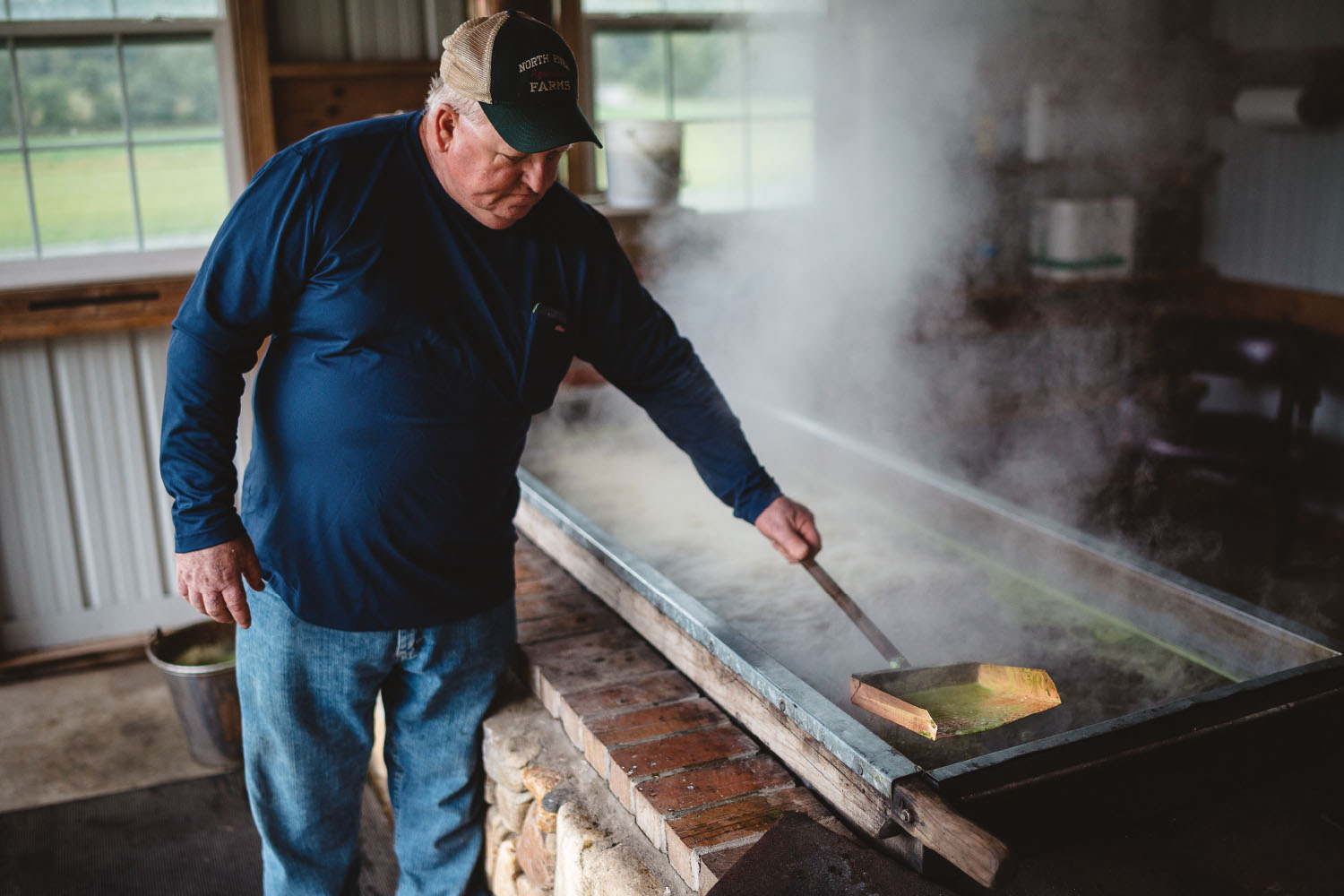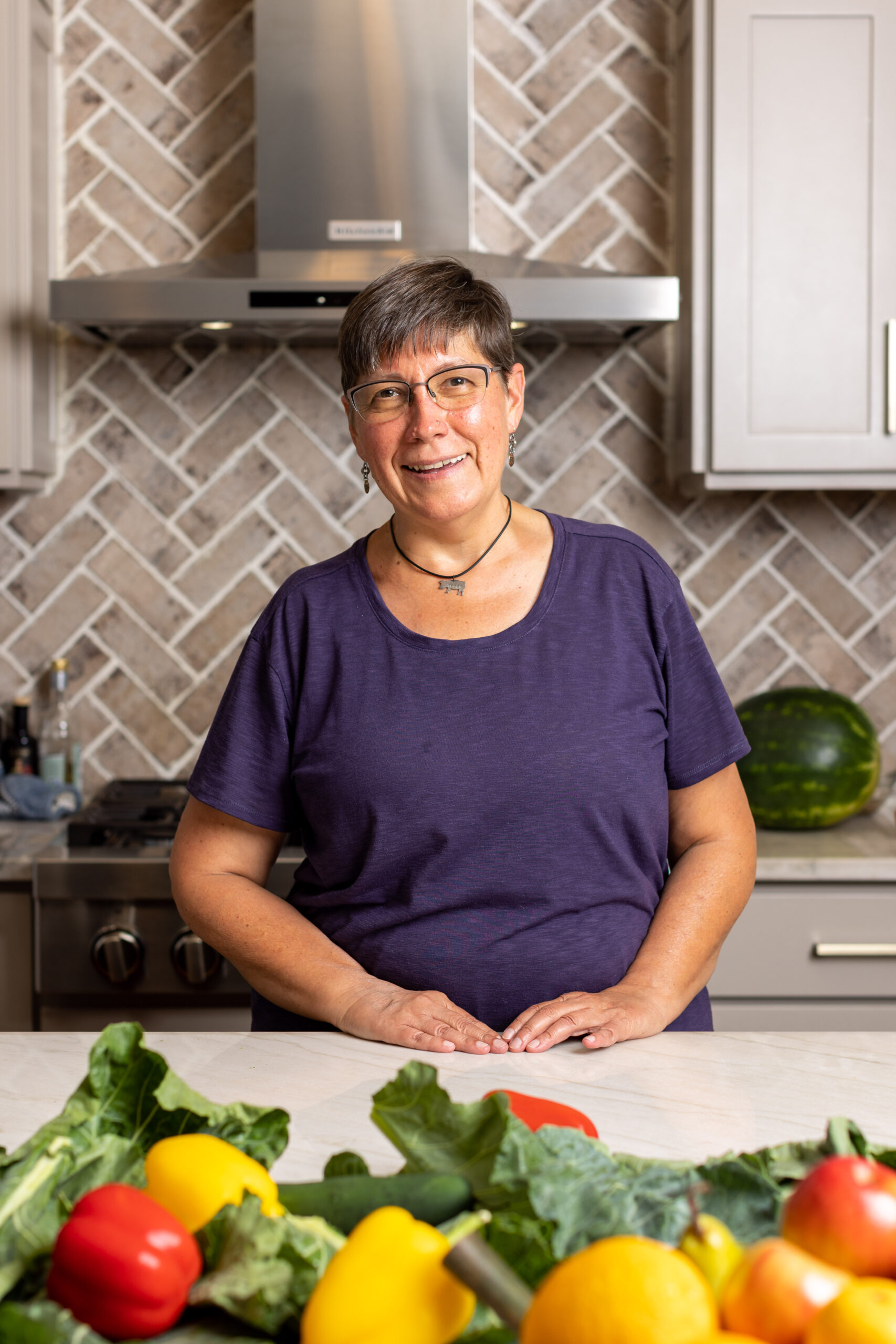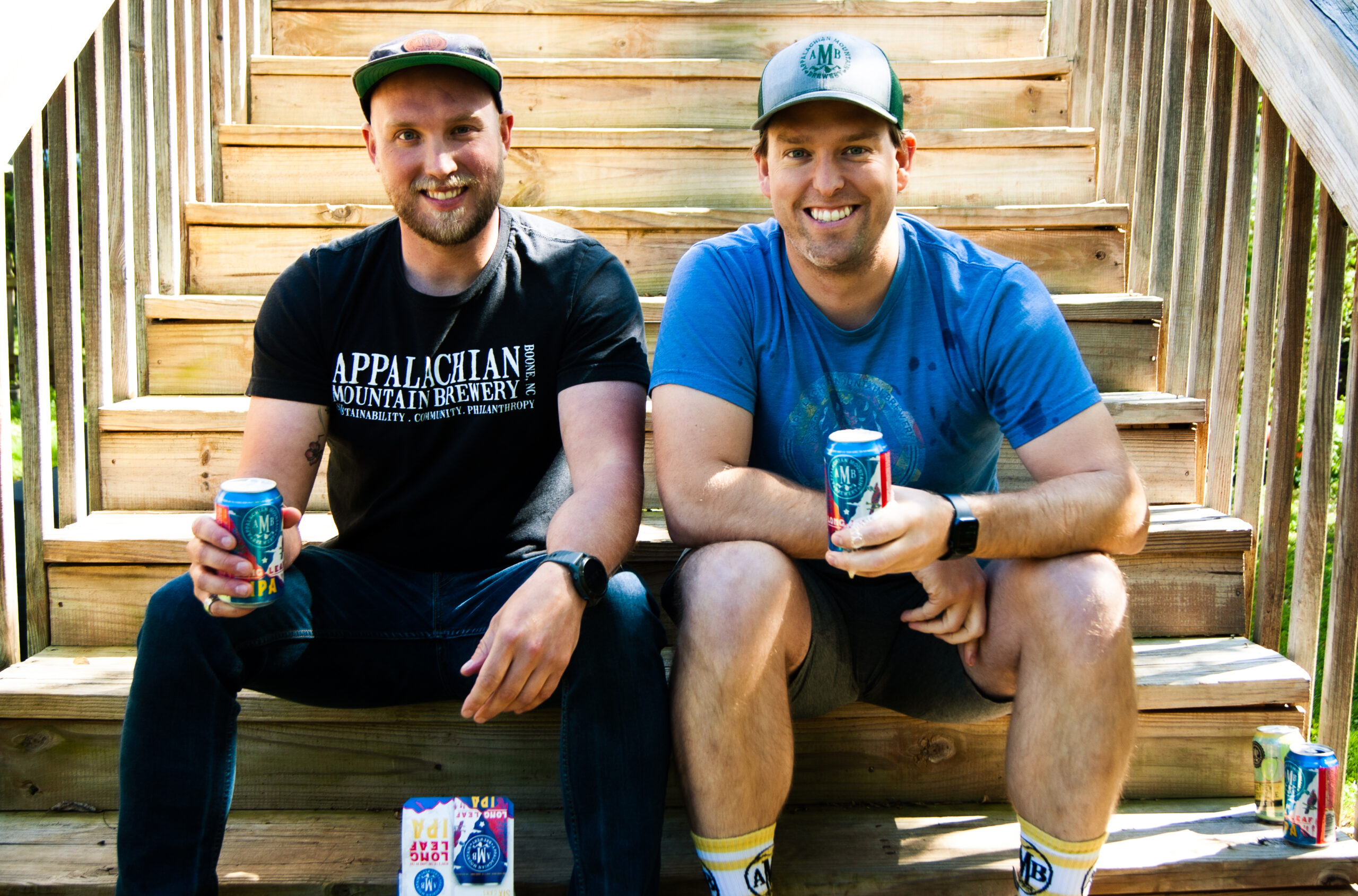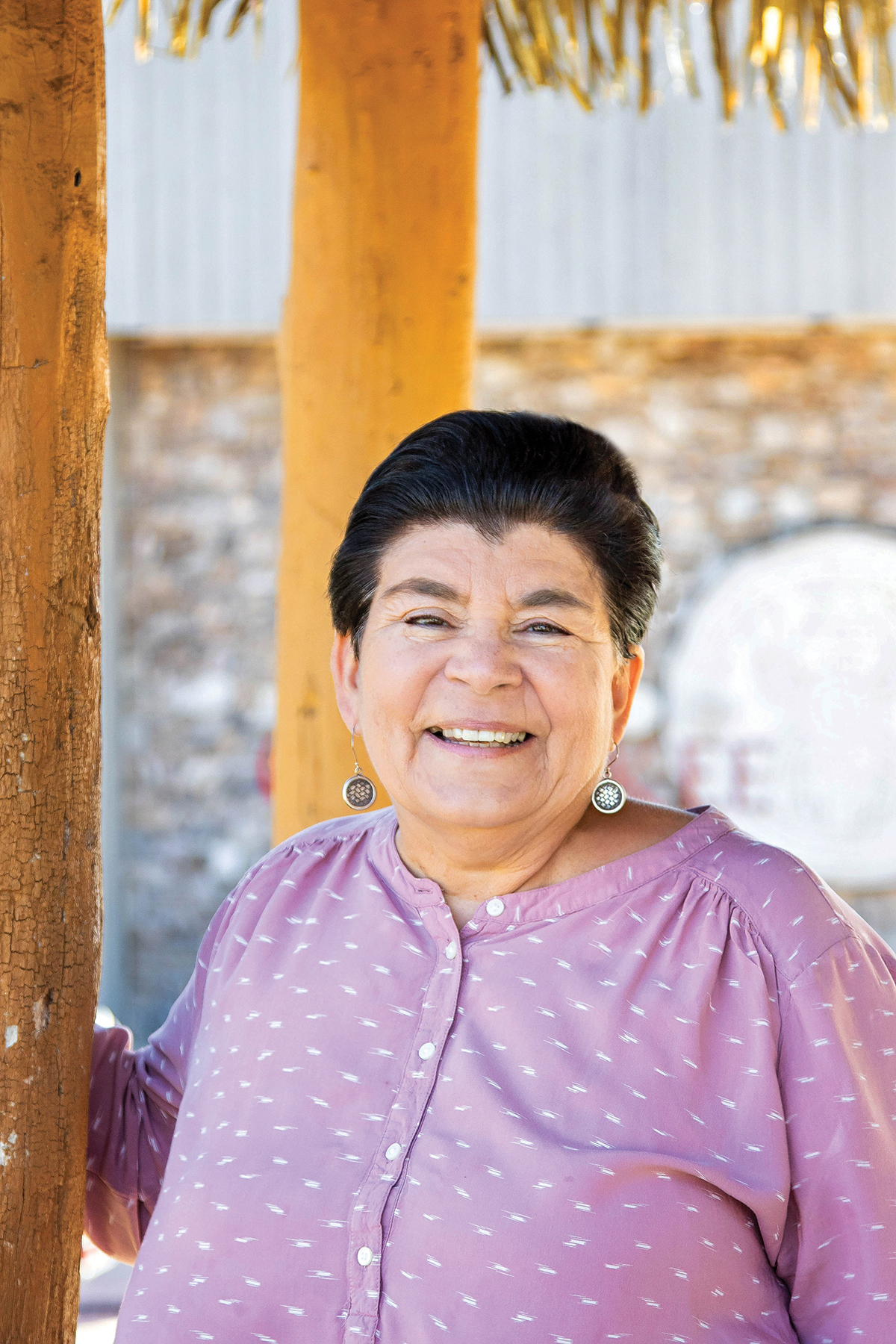
Lonnie Fox (Jason Davis’ uncle) considers the flow at North River Farms.
Photo by Rachel Pressley
North River Farms has been a manifestation of Jason Davis’ vision for almost two decades — and a successful one. Along with the original intention to provide high-quality produce and hay to Western North Carolina, Davis also preserves his five-generational family art of making molasses.
“I have early childhood memories of the smell of woodsmoke and the steam rolling off the pan on those cool late-September mornings,” he describes. “I remember those perfect biscuits that only Mammaw could fix, and how much fun it was to taste what was left in the box after the molasses had been poured up.”

Molasses seed pod.
Photo by Rachel Pressley
Davis learned about each stage of the molasses process from his grandfather (who learned from his father) — everything from growing the sugar cane to milling and cooking it. He explains, “Pappaw believed in hard work and doing things right the first time.” His grandfather’s methods became a painstaking science that Davis studied carefully, and he continues to honor the original protocol by doing most of the work by hand.
In 2014, his grandfather officially passed the art to Davis and his three sons when he was no longer able to put in the physically demanding hours stripping the fodder, cutting the cane, and standing over the heat for extended periods of time.
“He gave me his seed that has been kept for generations, his cane grinder mill, and both his cooking pans,” Davis says. “It was up to us to build a shed and construct a masonry furnace.” Equipped with knowledge of the process and first-hand experience with the cornerstone of his family, Davis was well prepared for the task at hand.
Molasses making is multi-stepped, and begins far before harvest time in September. Davis encourages those interested in learning about the molasses-making process to visit the farm to observe it in action.
In the first two months of the year, Davis strategizes and prepares the ground, just as he would any of his other crops. With the help of his crew, family, and neighbors, he plows the land in February and establishes a one-acre seedbed by April. Close to the tenth of May, he plants the cane seeds, each two to three inches apart.
Davis explains, “Once the cane germinates, we often go back through and thin the crop to ensure proper spacing and population. We will continue to cultivate and fertilize until layby,” meaning the demarcation of road where vehicles can drive on and park.
Around August, the cane develops seed heads that are at first green in color before they develop into orange, and, finally, a deep red. This color change signifies the maturation of the cane, calling for harvest, which consists of cutting the cane at the base and stripping the leaves and seed pods, the latter saved for the next year.
Then, it is time to cook. Five days after harvesting, Davis takes the stalks by hand to the farm to press them, filtering the juice into an 80-gallon pan that sits on a massive, wood-fired furnace. The actual, edible molasses is just a fraction of the juice he begins with. “It takes about six hours to cook the juice from 80 gallons down to a finished product of six to seven gallons of molasses,” he says. Finally, he bottles the molasses for sale.
Davis intimately knows that harvest time, typically a two-week window with sugar cane, is at the mercy of the weather and its temperatures. Despite Hurricane Florence, he was still able to harvest on time during the week of September 17. Now in November, the process is complete — the molasses has been bottled and is ready to consume.

North River Farms Production
LEFT: Edvardo peels leaves off of sugar cane.
TOP RIGHT: Jarring molasses.
BOTTOM RIGHT: Miguel cooks molasses.
Photos by Rachel Pressley
Among North River Farms’ jars for sale is dark molasses, popular in fall menus and holiday recipes. It’s a common ingredient in breads, cookies, and pies, specifically gingerbread and sweet-potato pie. Year round, molasses can be found in barbecue sauces and baked beans for its full-bodied sweetness.
Davis’ fondest memory of molasses hasn’t changed since he was a kid, though his role in the family operation is now integral to its yearly success in molasses production. “To this day, my favorite part is taste testing our product on a hot biscuit.”
North River Farms is located in Mills River at 3333 North Mills River Road. Visit northriverfarms.co for event schedules and information about tours and party hosting. North River Farms molasses can be found at WNC and Mills River Farmers Markets, along with farm produce.



